Buyer expectations for meals labeling have undergone a elementary shift. In keeping with a latest survey, three-quarters of U.S. consumers now demand complete details about the meals they purchase, and practically two-thirds scrutinize labels extra fastidiously than they did 5 years in the past. This is not a passing pattern, however fairly is pushed by extra households managing allergy symptoms and intolerances, and extra consumers dedicated to particular diets, comparable to vegan, vegetarian, or gluten-free.
However here is the problem: solely 16% of customers belief well being claims from meals producers. Meaning consumers wish to consider merchandise themselves, on their very own phrases. They’re scanning ingredient lists and punctiliously reviewing bundle labels to raised perceive sourcing, manufacturing practices, vitamin, and the way these align with their particular well being wants as a part of their buying choice.
Whereas regulators work on up to date labeling necessities, main retailers are already taking motion. They’re utilizing superior information extraction and ingredient analytics to remodel packaging and vitamin labels into searchable, filterable digital experiences. This lets prospects discover precisely what they want, whether or not that is allergen-free choices, gluten-free merchandise, or sustainably sourced gadgets. These transparency initiatives not solely differentiate these retailers from their opponents but additionally drive deeper buyer engagement and increase gross sales, particularly of higher-margin merchandise.
The Information + AI Answer
It’s difficult to maintain up with the 35,000 distinctive SKUs present in a typical U.S. grocery retailer, with 150 to 300 new ones launched month-to-month. However with right this moment’s agentic AI purposes, now you can automate meals label studying at scale and at an inexpensive value.
With photographs of nutrient labels offered as inputs, these methods parse the photographs to extract uncooked ingredient and vitamin info. This info is then processed into structured information that may energy each inside analytics and customer-facing digital experiences. From these information, you possibly can then create customized classifications for allergens, ultra-processed components, sustainability attributes, and life-style preferences, precisely what it’s essential assist your prospects.
On this weblog, we’ll present you tips on how to implement an end-to-end course of utilizing Databricks’ Agent Bricks capabilities to simplify and streamline the event and deployment of an automatic meals label reader to your group.
Constructing the Answer
Our meals label studying workflow is fairly easy (Determine 1). We’ll load photographs taken from meals packages into an accessible storage location, use AI to extract textual content from the photographs and convert it right into a desk, after which apply AI to align the extracted textual content to a recognized schema.
In our first step, we acquire a lot of photographs of product packages displaying ingredient lists, just like the one proven in Determine 2. These photographs in .png, .jpeg, or .pdf format are then loaded right into a Unity Catalog (UC) quantity, making them out there inside Databricks.
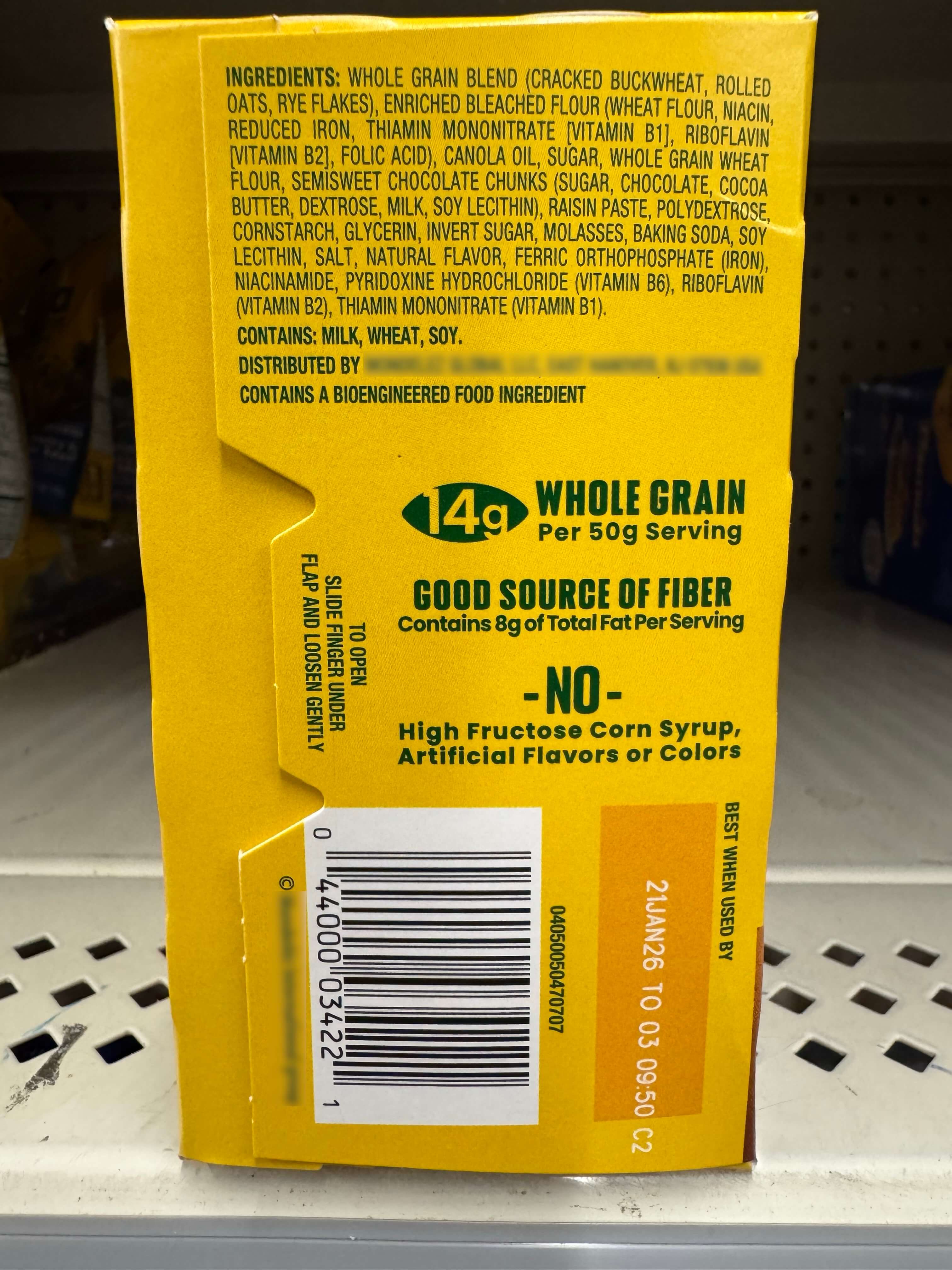
With our photographs loaded, we choose Brokers from the left-hand menu of the Databricks workspace and navigate to the Data Extraction agent proven on the prime of the web page (Determine 3).
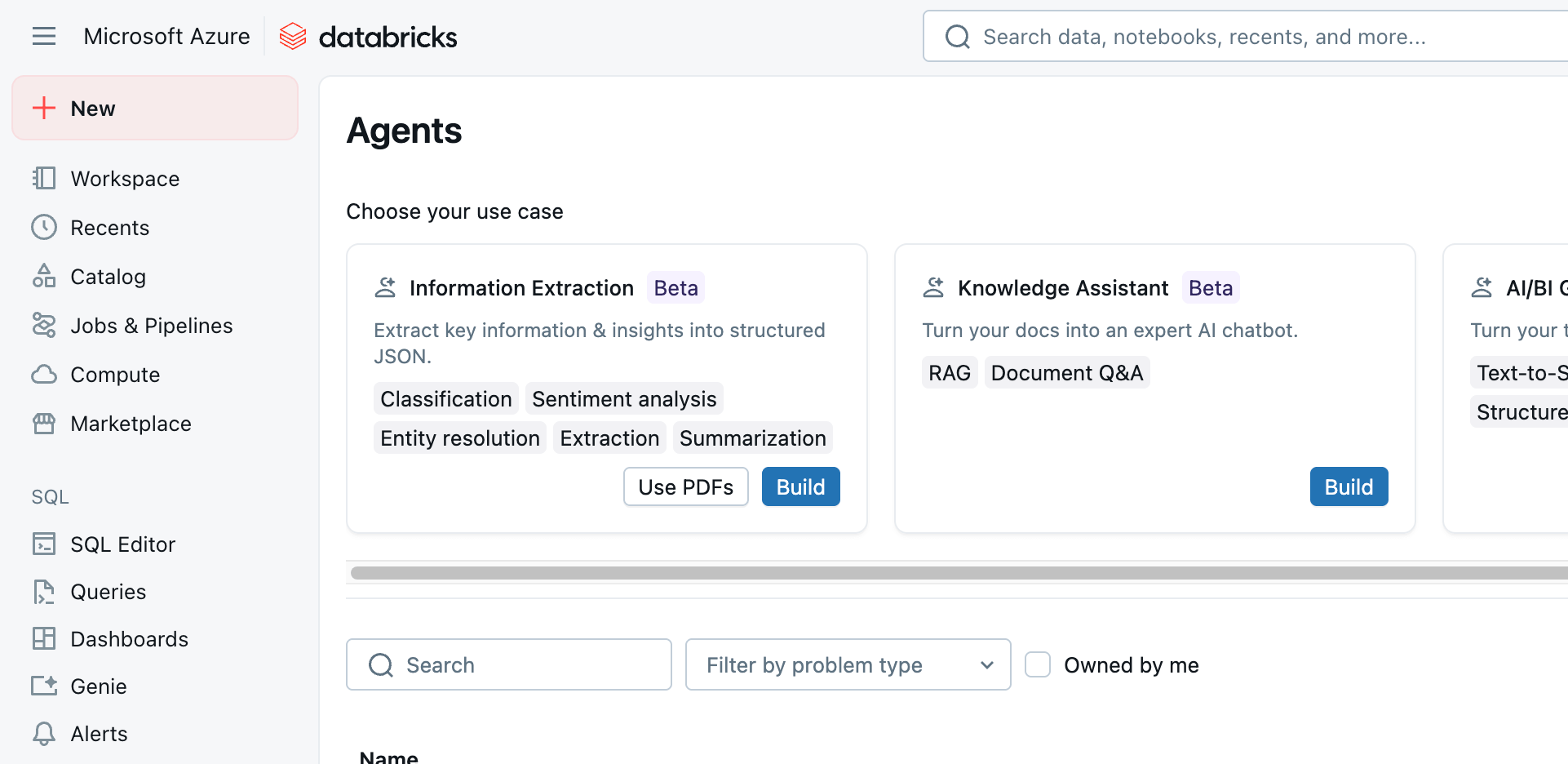
The Data Extraction agent offers us with two choices: Use PDFs and Construct. We’ll begin by choosing the Use PDFs choice, which can enable us to outline a job extracting textual content from numerous picture codecs. (Whereas the .pdf format is indicated within the identify of the choice chosen, different normal picture codecs are supported.)
Clicking the Use PDFs choice, we’re introduced with a dialog whereby we are going to establish the UC quantity through which our picture information reside and the identify of the (as of but non-existing) desk into which extracted info might be loaded (Determine 4)
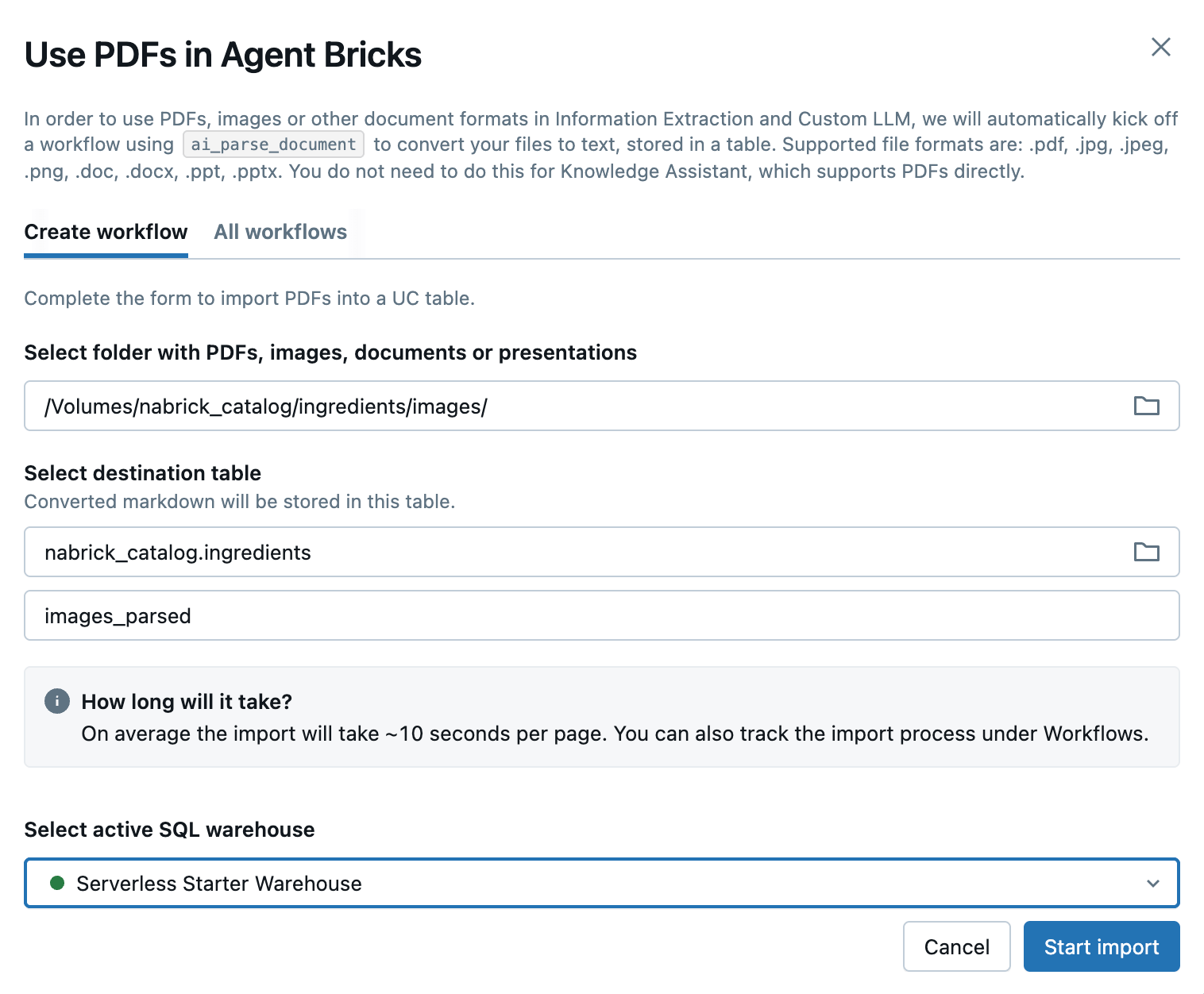
Clicking the Begin Import button launches a job that extracts textual content particulars from the photographs in our UC quantity and masses them into our goal desk. (We’ll return to this job as we transfer to operationalize our workflow). The ensuing desk incorporates a area figuring out the file from which textual content has been extracted, together with a struct (JSON) area and a uncooked textual content area containing the textual content info captured from the picture (Determine 5).
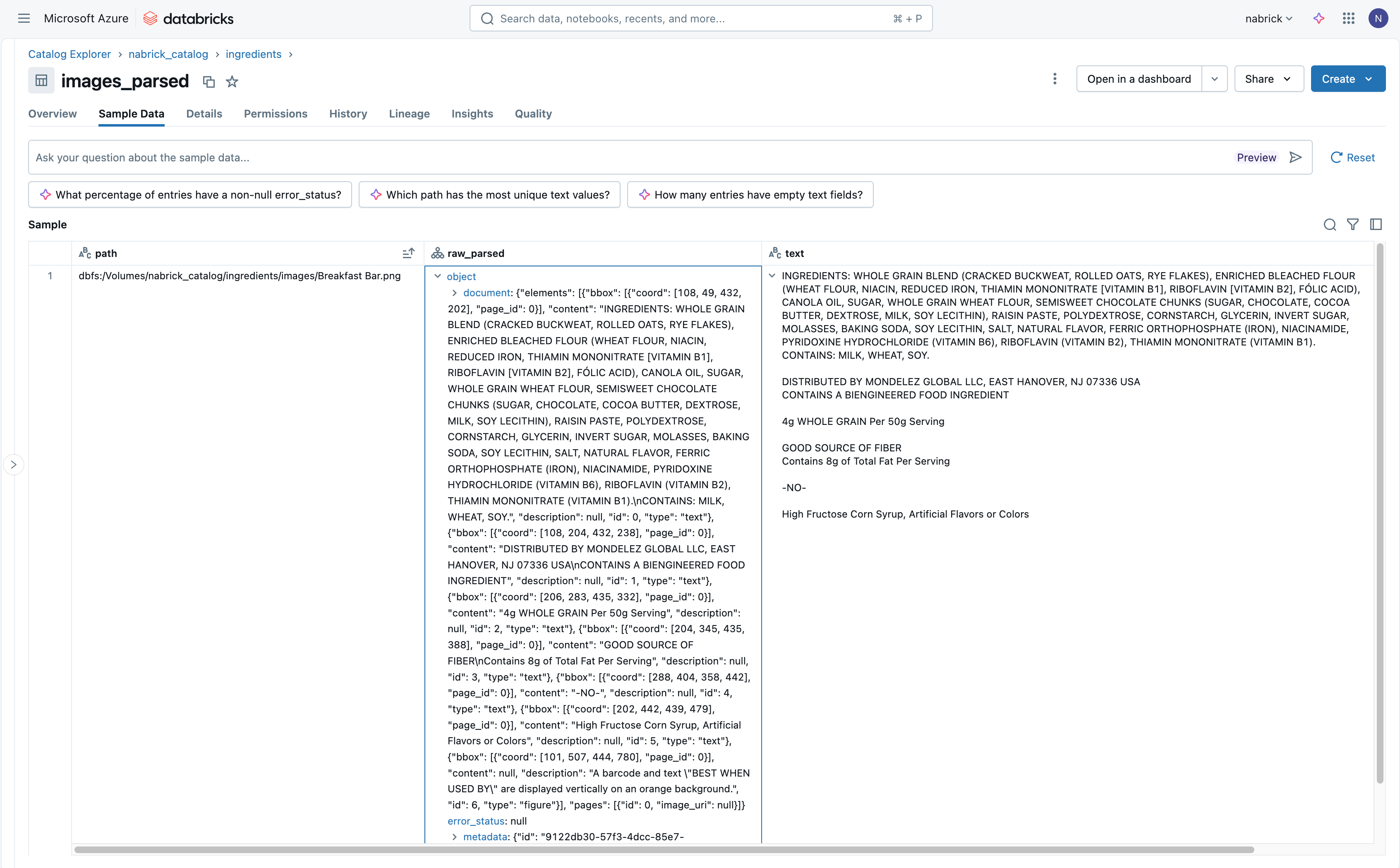
Reviewing the textual content info delivered to our goal desk, we are able to see the total vary of content material extracted from every picture. Any textual content readable from the picture is extracted and positioned within the raw_parsed and textual content fields for our entry.
As we’re solely within the textual content related to the components record present in every picture, we might want to implement an agent to slim our focus to pick out parts of the extracted textual content. To do that, we return to the Brokers web page and click on the Construct choice related to the Data Extraction agent. Within the ensuing dialog, we establish the desk to which we beforehand landed our extracted textual content and establish the textual content area in that desk because the one containing the uncooked textual content we want to course of (Determine 6).
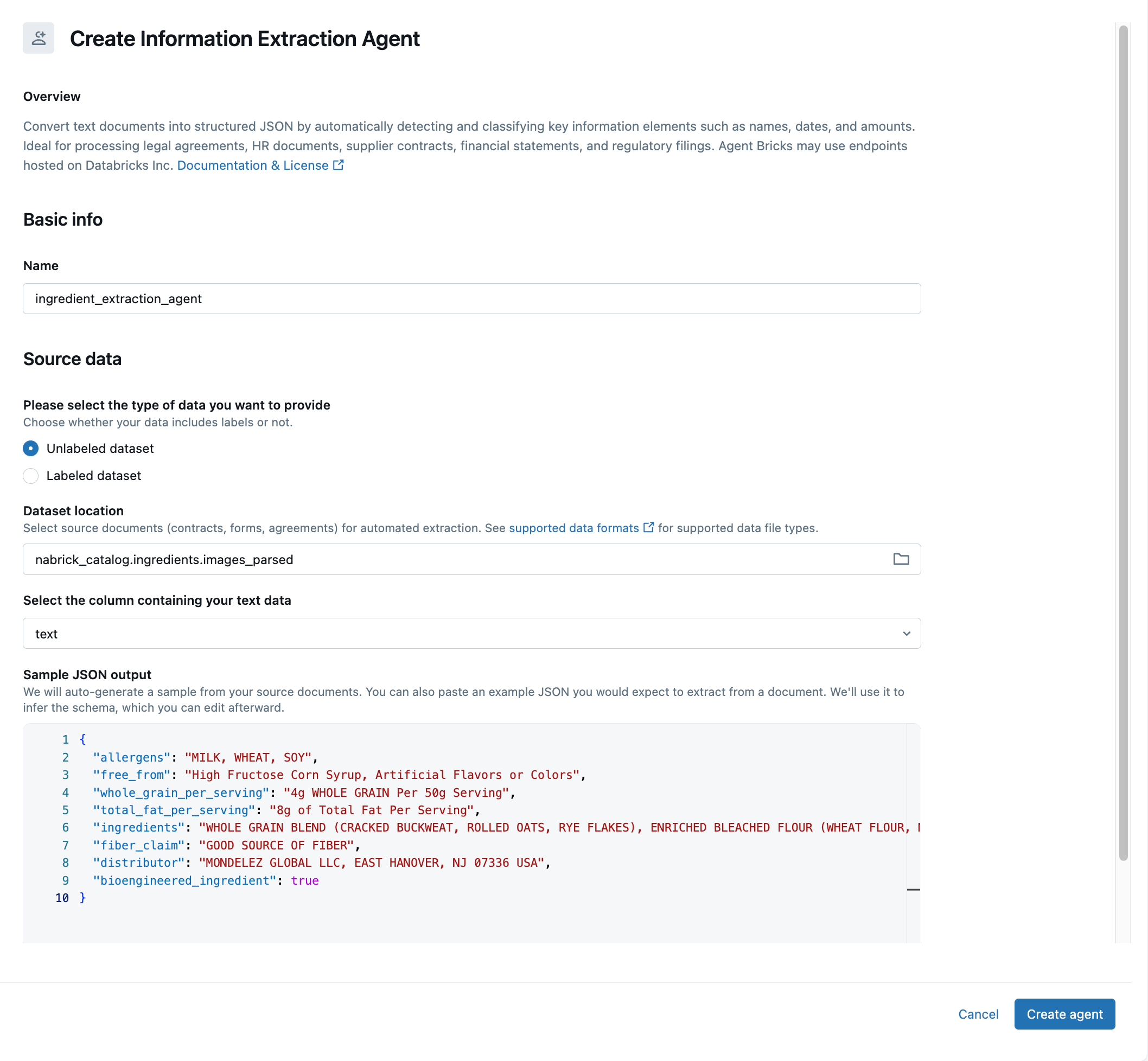
The agent will try to infer a schema for the extracted textual content and current information components mapped to this schema as pattern JSON output on the backside of the display. We will settle for the information on this construction or manually reorganize the information as a JSON doc of our personal definition. If we take the latter strategy (as will most frequently be the case), we merely paste the re-organized JSON into the output window, permitting the agent to deduce an alternate schema for the textual content information. It would take a number of iterations for the agent to ship precisely what you need from the information.
As soon as now we have the information organized the best way we wish it, we click on the Create Agent button to finish the construct. The UI now shows parse output from throughout a number of data, permitting us a chance to validate its work and make additional modifications to reach at a constant set of outcomes (Determine 7).
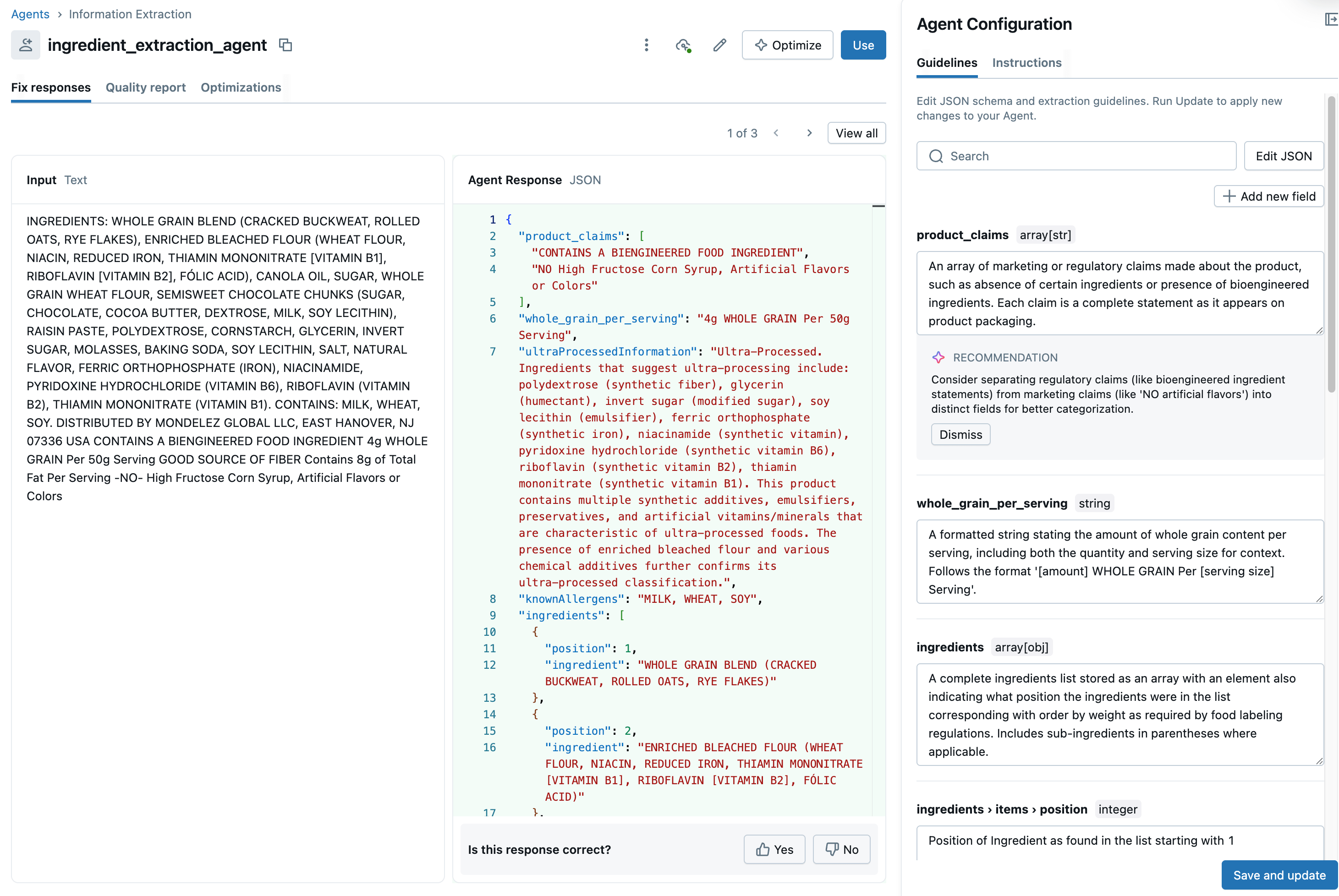
Along with validating the schematized textual content, we are able to add further fields utilizing easy prompts that look at our information to reach at a price. For instance, we’d search our ingredient record for gadgets more likely to comprise gluten to deduce if a product is gluten-free or establish animal-derived components to establish a product as vegan-friendly. The agent will mix our information with information embedded in an underlying mannequin to reach at these outcomes.
Clicking Save and Replace saves our adjusted agent. We will use the High quality Report and Optimization tabs to additional improve our agent as described right here. As soon as we’re glad with our agent, we click on Use to finish our construct. Deciding on the Create ETL Pipeline choice will generate a declarative pipeline that may enable us to operationalize our workflow.
Word: You may watch a video demonstration of the next steps right here.
Operationalizing the Answer
At this level, now we have outlined a job for extracting textual content from photographs and loading it right into a desk. We have now additionally outlined an ETL pipeline for mapping the extracted textual content to a well-defined schema. We will now mix these two components to create an end-to-end job by which we are able to course of photographs on an ongoing foundation.
Returning to the job created in our first step, i.e. Use PDFs, we are able to see this job consists of a single step. This step is outlined as a SQL question that makes use of a generative AI mannequin by way of a name to the ai_query() operate. What’s good about this strategy is that it makes it easy for builders to customise the logic surrounding the textual content extract step, comparable to modifying to logic to solely course of new information within the UC quantity.
Assuming we’re glad with the logic in step one of our job, we are able to now add a subsequent step to the job, calling the ETL pipeline we outlined beforehand. The high-level actions required for this are discovered right here. The top result’s we now have a two-step job capturing our end-to-end workflow for ingredient record extraction that we are able to now schedule to run on an ongoing foundation (Determine 8).
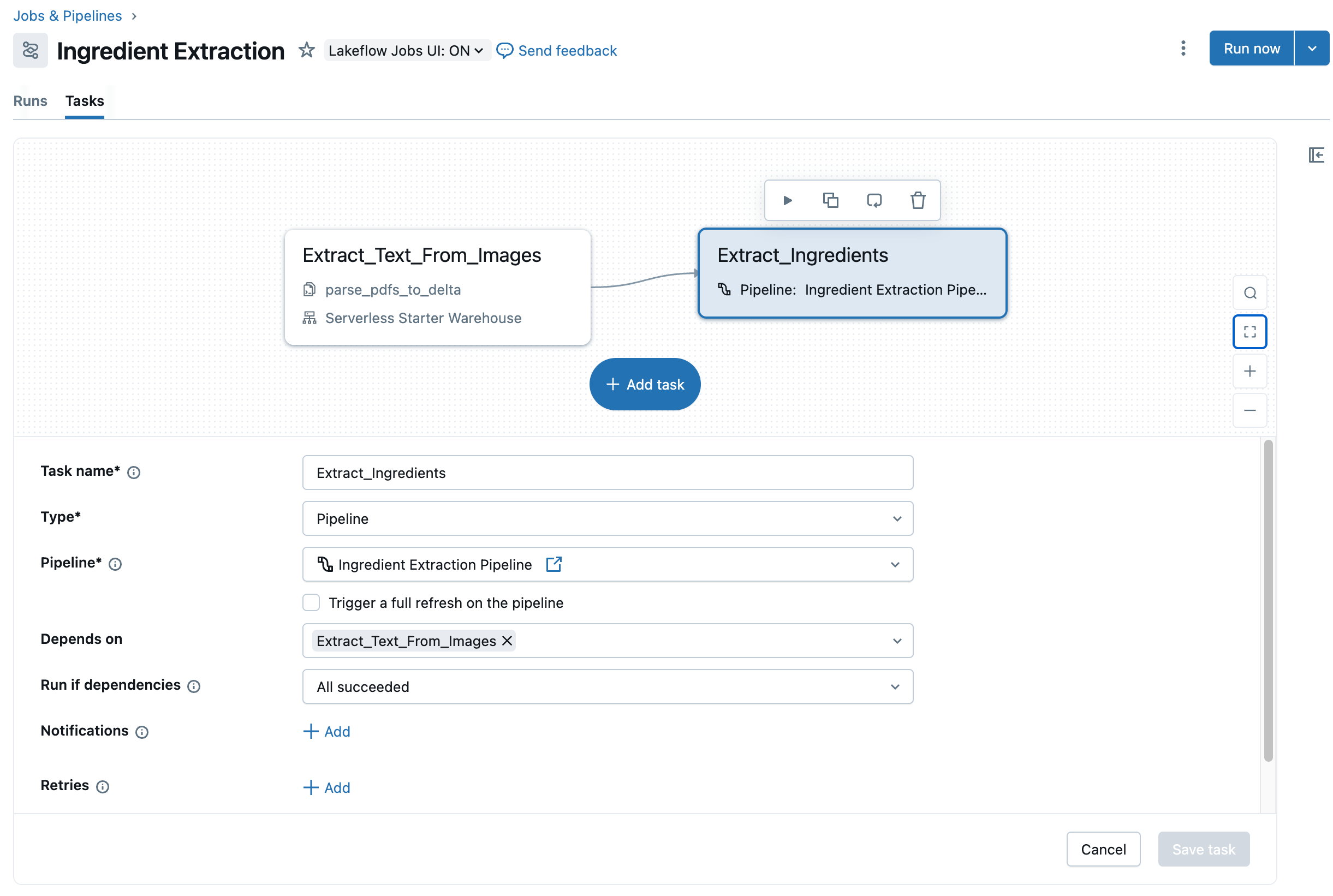
Get Began Immediately
Utilizing Databricks’ new Agent Bricks functionality, it’s comparatively simple to construct agentic workflows able to tackling beforehand difficult or cumbersome guide duties. This opens up a spread of prospects for organizations able to automate doc processing at scale, whether or not for meals labels, provider compliance, sustainability reporting, or some other problem involving unstructured information.
Able to construct your first agent? Begin with Agent Bricks right this moment and expertise what main organizations have already found: computerized optimization, no-code growth, and production-ready high quality in hours as an alternative of weeks. Go to your Databricks workspace, navigate to the Brokers web page, and rework your doc intelligence operations with the identical confirmed expertise that is already processing hundreds of thousands of paperwork for enterprise prospects worldwide.
- Begin constructing your first agent with Agent Bricks right this moment in your Databricks workspace
- Expertise no-code growth and production-ready high quality in hours as an alternative of weeks

